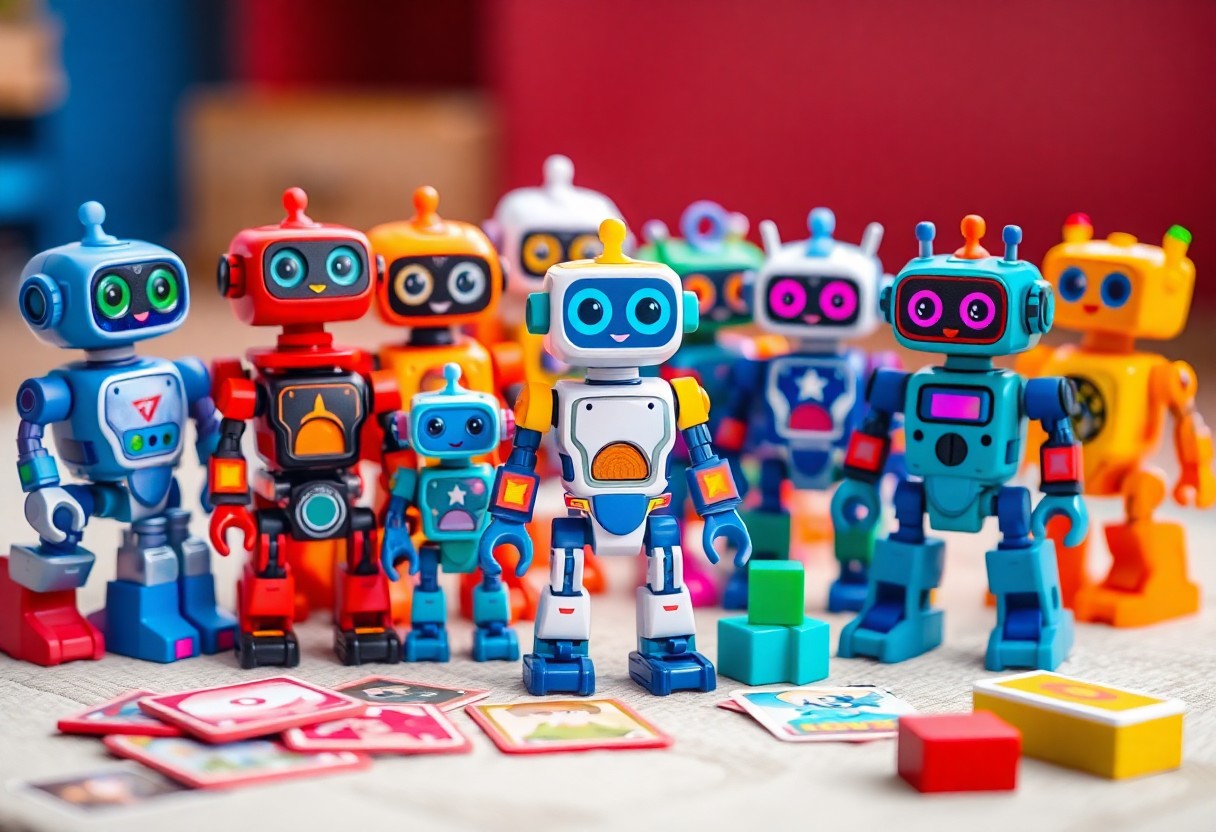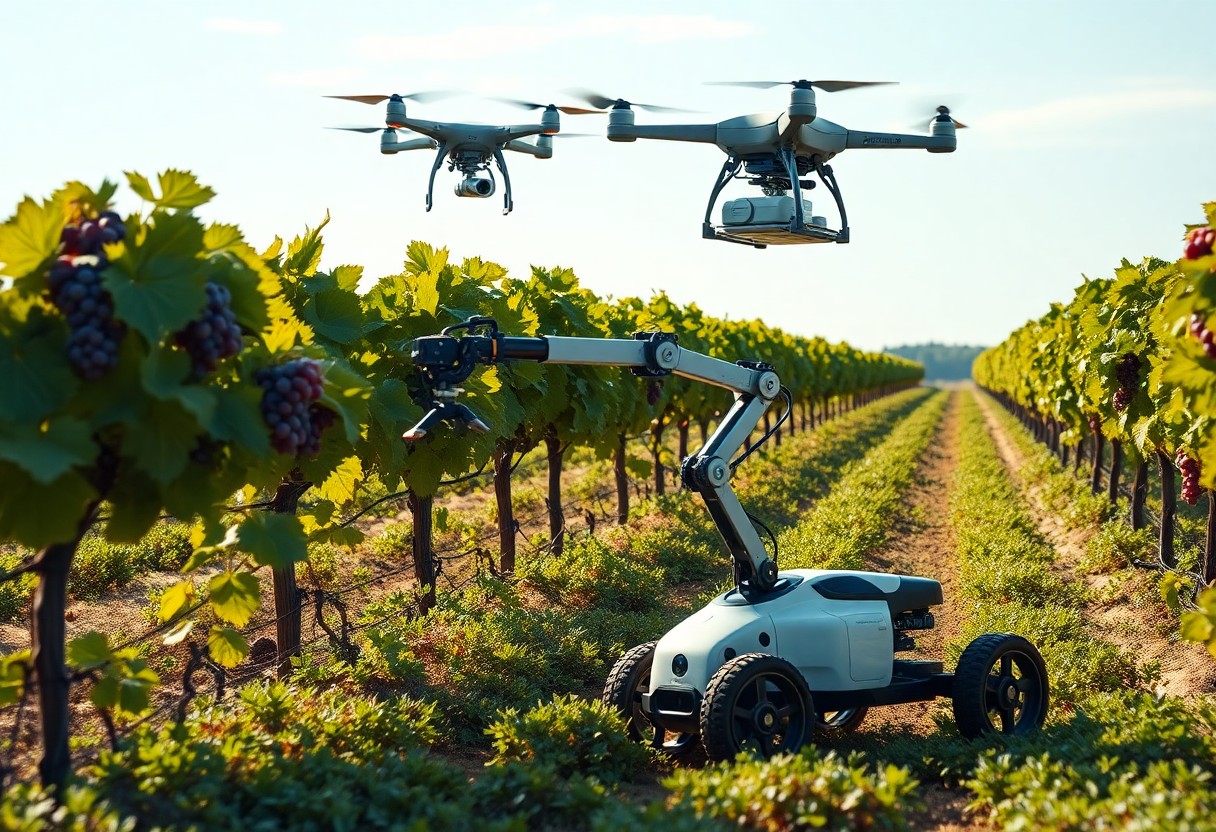It’s becoming increasingly apparent that robots are transforming your daily life in numerous ways. From robots assisting in household chores to those enhancing productivity in workplaces, these machines are designed to make tasks easier and more efficient. Whether you benefit from robotic vacuums, automated customer service, or even surgical robots, their integration into your routine is undeniable. As technology continues to advance, understanding how these innovations impact you will be important in navigating the future they help create.
The Rise of Domestic Robots
While the integration of technology into your home continues to evolve, domestic robots have emerged as invaluable companions in your daily life. From smart home assistants to cleaning robots, these innovations are designed to streamline your routines, enhance convenience, and provide you with more time to focus on what truly matters. As the capabilities of these robots improve, their presence in homes is expected to grow, transforming everyday chores into seamless experiences.
Smart Home Assistants
Between voice-activated devices and AI-driven applications, smart home assistants significantly enhance your home environment. They can control various connected devices, manage your schedule, and even provide real-time information on traffic or weather, making it easier for you to stay organized. These assistants have become central to modern living, with millions of users relying on them for daily tasks.
Cleaning and Maintenance Robots
Below the surface of everyday chores, cleaning and maintenance robots are revolutionizing how you maintain your home. By taking over tasks such as vacuuming and lawn care, these robots not only save time but also allow you to focus on other priorities, ultimately leading to a more efficient lifestyle.
Robots like robotic vacuum cleaners and lawn mowers operate with advanced sensors and smart navigation systems, ensuring thorough coverage of your living space or yard. You can schedule their activity via smartphone apps, allowing these devices to run autonomously while you engage in other activities. Statistics show that users have reported as much as 30% more free time after incorporating these robots into their cleaning routines, showcasing how they can enhance your quality of life.
Robots in Healthcare
Any discussion on how robots change our daily lives would be incomplete without highlighting their impact on healthcare. Innovative robotic technologies enhance diagnosis, improve surgical precision, and facilitate patient recovery, thus transforming patient care. From robotic surgeries to rehabilitation assistance, these machines not only support healthcare professionals but also elevate the overall patient experience, streamlining processes and increasing efficiency in hospitals and clinics worldwide.
Surgical Robots
Above all, surgical robots represent a groundbreaking advancement in medical procedures. These systems enable minimally invasive surgeries, allowing surgeons to perform complex tasks with enhanced dexterity and precision. By utilizing robotic arms controlled by a surgeon from a console, these technologies significantly reduce recovery times and minimize discomfort for patients. Studies have shown that surgeries performed with robotic assistance can lead to improved outcomes and decreased risk of complications.
Rehabilitation and Assistance
Among the various applications of robotics in healthcare, rehabilitation and assistance technologies stand out for their ability to enhance patient recovery and promote independence. Robots designed for rehabilitation can assist you in regaining mobility through tailored exercises, improving both physical and emotional well-being. They enable personalized therapy based on your specific needs, helping you track progress more effectively.
Considering the growing prevalence of robotic systems in rehabilitation, your journey to recovery can be more engaging and efficient. These advanced robots utilize real-time data to adapt exercises, providing immediate feedback and motivation. Additionally, robotic exoskeletons can significantly aid those with mobility challenges, allowing you to participate more fully in daily activities. With the integration of robotics, the future of rehabilitation holds promise for enhanced quality of life and quicker recoveries.
Automation in Transportation
Clearly, the automation of transportation is transforming how you travel and receive goods. From self-driving cars to efficient delivery systems, these technological advancements promise to enhance safety, reduce traffic congestion, and streamline logistics. As vehicles become increasingly equipped with artificial intelligence, you will benefit from enhanced convenience and efficiency in your daily routines.
Self-Driving Vehicles
About self-driving vehicles, they represent a major leap toward safer and more efficient roads. With advanced sensors and AI algorithms, these vehicles can navigate complex environments while minimizing human error. As a result, you can expect a future where your commutes are less stressful, and your focus can shift from driving to other activities.
Delivery Drones
On the topic of delivery drones, they are revolutionizing how packages reach your doorstep. With the capability to bypass traffic and deliver items directly to you in a matter of minutes, drones are changing the landscape of e-commerce and logistics.
Drones are increasingly utilized by companies to ensure faster deliveries and reduce transportation costs. By leveraging technology, they can navigate autonomously and reach remote locations that ground vehicles might struggle to access. As these drones evolve, you can expect quicker shipping times, which will enhance convenience for your shopping needs. With projections showing that drone deliveries could reach a market size of $29 billion by 2027, it’s clear that this innovation will significantly impact your daily life.
Robots in Education
Your learning experience is being transformed by robots, which play a pivotal role in modern education. These technologies not only provide interactive ways to grasp complex subjects but also foster creativity and critical thinking. As classroom dynamics evolve, you’ll find robots enhancing collaboration and engagement, making education not just informative but also enjoyable.
Interactive Learning Tools
Beside traditional teaching methods, interactive learning tools such as robotic kits create immersive educational environments. These tools allow you to engage in hands-on activities, enhancing your understanding of subjects like mathematics and science while enabling a more tactile approach to learning. With robotics, you can explore concepts in real-time, fostering a deeper connection to the material.
Robotics in STEM Education
Among the many advancements in education, robotics stands out in STEM (Science, Technology, Engineering, and Mathematics) education. This integration helps you develop problem-solving skills and an understanding of technical concepts that are vital in today’s workforce.
The incorporation of robotics in STEM education has shown promising results, with studies indicating that students engaged in robotics programs score higher in STEM competencies. By participating in hands-on projects, you can grasp abstract concepts more readily, prepare for future careers, and encourage innovative thinking. These experiences not only boost your interest in STEM fields but also equip you with the skills highly sought after in a technology-driven world.
Impact on Employment
Now, robots are reshaping the employment landscape in both positive and challenging ways. While automation streamlines tasks, it can lead to significant changes in job markets, fostering new opportunities in tech-driven fields while rendering some traditional roles obsolete. Understanding this dynamic is vital for your career planning and adaptation.
Job Creation vs. Job Displacement
Behind the scenes, the rise of robotics brings about a dual effect: job creation in new sectors and job displacement in others. For instance, as automated systems take on routine tasks, industries require skilled professionals to manage, maintain, and develop these technologies, balancing the scales between gained and lost employment opportunities.
The Future Workforce
An evolving job market necessitates a forward-thinking approach for your career. As robots take over repetitive tasks, the demand grows for skills in areas like programming, data analysis, and robotics maintenance, transforming job roles and creating new professions.
A key element of this transformation is continuous learning and adaptability. As the reliance on automation increases, you can take proactive steps to stay ahead by upskilling or reskilling in areas aligned with technological advancements. Engaging with educational resources and online courses can bolster your skillset, allowing you to navigate and thrive in a future workforce that heavily incorporates robotics.
Ethical Considerations
Keep in mind that as robots increasingly integrate into daily life, ethical implications often surface. Questions around job displacement, accountability, and human dignity are prominent. It’s imperative to evaluate how these machines impact your social dynamics and the balance between convenience and ethical responsibility.
Privacy Concerns
Across the globe, robots equipped with cameras and sensors collect vast amounts of personal data. This intrusion into your private life raises significant privacy issues. As you interact with these intelligent systems, understanding how your data is collected, stored, and used becomes crucial to ensure your personal space is respected.
Dependency on Robots
Below the surface, the increasing reliance on robots can alter your daily routines and problem-solving skills. While these machines provide efficiency and ease, they may also lessen your engagement in tasks that enhance cognitive abilities and personal accountability.
It’s important to recognize that while robots can streamline your life, over-dependence may result in a decline in traditional skills and critical thinking. This shift could affect not only your daily tasks but also your ability to adapt in varied situations. As you embrace robotic assistance, strive for a balance that allows you to maintain imperative skills while enjoying the benefits of technology.
Final Words
To wrap up, you can see how robots are seamlessly integrating into your daily life, transforming various aspects from home chores to workplace tasks. These advancements not only enhance your productivity but also improve your quality of life by providing convenience and assistance. As technology continues to evolve, embracing these innovations can lead to a more efficient and enjoyable lifestyle, opening up new possibilities for personal and professional growth.







Leave a Reply
You must be logged in to post a comment.